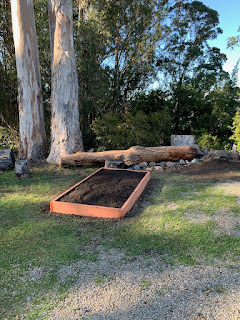Elena Mesker
25 May 2020
What I'm doing:
Working alongside my mom and stepdad, we compiled a total of almost 3,000 lbs of compost. This extremely rich soil came from West Marin Compost (http://westmarincompost.org/drop-off). The stable where we board our horses, compiles massive amounts of manure and every three weeks it's loaded into a truck and dumped at the Nicasio center. Here, they create enormous amounts of rich soil that's made from manure and other leftover vegetation and debris. My stepdad loaded his truck bed full of this rich soil and we shoveled it into wheelbarrows and out to our garden and some flower pots. Once the dirt was separated and dispersed, we planted. Here are some of the things we planted, and in some cases, harvested.
How does it promote sustainability:
We are already educated and aware about the benefits of compost and recycling and the West Marin Compost Center in Nicasio, CA combines both practices. This eliminates the need for synthetic fertilizers that are commonly used but often toxic for the natural environment. It creates a space for no longer needed plant debri and gives it a new chance at life. By recycling natural materials such as animal manure and plant matter, microorganisms are flourishing by composting and creating an extremely rich soil chalk full of microbes.
How can we implement this in the Farm:
Two Ideas: First, I think we should either donate some of our compost to the West Marin Compost Center to support their business or receive a certain amount of their rich compost and conduct a study where we focus on which seems to be favored by plants and microorganisms. Second, I think we should work harder to maximize our compost intake and export into the beds. What I mean by this is to get a head start at the beginning of the year of planting compost crops and adding manure from the chicken and outside sources such as horses and cows.
All Photos Below







